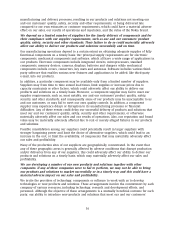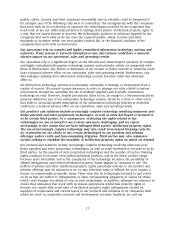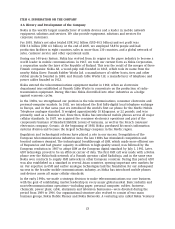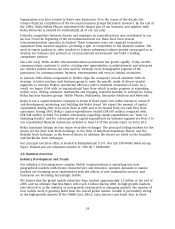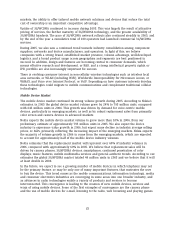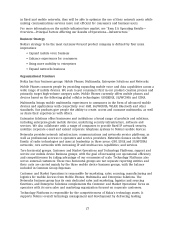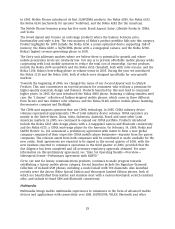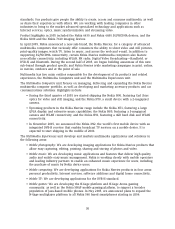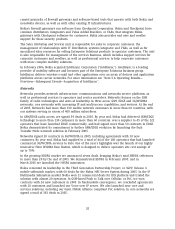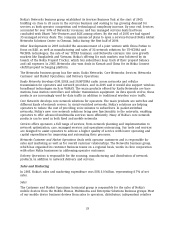Nokia 2005 Annual Report Download - page 26
Download and view the complete annual report
Please find page 26 of the 2005 Nokia annual report below. You can navigate through the pages in the report by either clicking on the pages listed below, or by using the keyword search tool below to find specific information within the annual report.Organization was later created to foster new businesses. Over the course of the decade, the
relative financial contribution of the two main business groups fluctuated. However, by the end of
the 1990s, Nokia Mobile Phones represented the largest part of our business, and together with
Nokia Networks accounted for substantially all of our net sales.
Finland’s competitive business climate and emphasis on innovation have also contributed to our
success. From the beginning of the telecommunications era, there have been several
telecommunications operators in Finland. These companies were not required to purchase
equipment from national suppliers, providing a spur to competition in the domestic market. The
need to export products to other markets to achieve substantial volume growth encouraged us to
develop our business and products in an international environment and build a leading
competitive position.
Since the early 1990s, mobile telecommunications penetration has grown rapidly. Today, mobile
communications continues to evolve, creating new opportunities in entertainment and enterprise
use. Nokia’s mobile devices are now used by virtually every demographic segment of the
population, for communications, business, entertainment and even as fashion accessories.
In January 2004, Nokia reorganized to further align the company’s overall structure with its
strategy, to better position each business group to meet the specific needs of diverse market
segments, to increase Nokia’s operational efficiency and to maintain economies of scale. As a
result, we began 2004 with an organizational base from which to make progress in expanding
mobile voice, driving consumer multimedia and bringing extended mobility to enterprises. Today,
Nokia has four business groups: Mobile Phones, Multimedia, Enterprise Solutions and Networks.
Nokia is not a capital-intensive company in terms of fixed assets, but rather invests in research
and development, marketing, and building the Nokia brand. We expect the amount of capital
expenditure during 2006 to be more than in 2005 and to be funded from our cash flow from
operations. During 2005, Nokia’s capital expenditures totaled EUR 607 million compared with
EUR 548 million in 2004. For further information regarding capital expenditures see ‘‘Item 5.A
Operating Results’’ and for a description of capital expenditures by business segment see Note 3 to
our consolidated financial statements included in Item 18 of this annual report on Form 20-F.
Nokia maintains listings on four major securities exchanges. The principal trading markets for the
shares are the New York Stock Exchange, in the form of American Depositary Shares, and the
Helsinki Stock Exchange, in the form of shares. In addition, the shares are listed on the Frankfurt
and Stockholm stock exchanges.
Our principal executive office is located at Keilalahdentie 4, P.O. Box 226, FIN-00045 Nokia Group,
Espoo, Finland and our telephone number is +358 (0) 7 1800-8000.
4.B Business Overview
Industry Development and Trends
Our industry is becoming more complex. Mobile communications is expanding into new
geographical markets with diverse characteristics and dynamics, operator demands in mature
markets are becoming more sophisticated with the advent of new multimedia services, and
businesses are becoming increasingly mobile.
We believe that the global mobile subscriber base reached approximately 2.2 billion at the end of
2005, and we estimate that this figure will reach 3 billion during 2008. In high-growth markets,
also referred to in the industry as new-growth, unsaturated or emerging markets, the number of
new mobile users is growing faster than the overall global market. Growth is particularly strong
in the high-growth markets of the Middle East, Africa, Latin America and South Asia. In these
24




